#Talhoffer
Explore tagged Tumblr posts
Text






A Collection of Asses from Various Historical Sword Fighting Treatises
#HEMA#sword#swords#knight#paladin#fiore dei liberi#fiore#hans talhoffer#talhoffer#Meyer#Joachim Meyer#Sebastian Heußler#Heußler#fencing#History
173 notes
·
View notes
Text
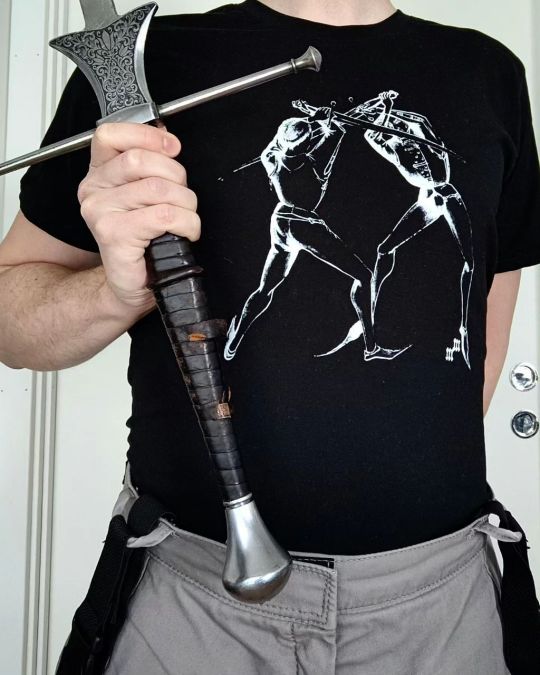


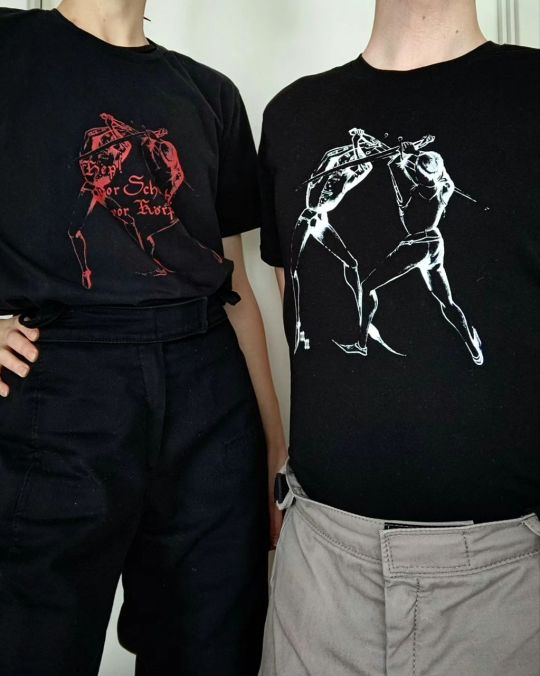
The wonderful fencing illustrations in Hans Talhoffers fencing manuals are of course iconic! We have two different versions of this Talhoffer design, one of them featuring German calligraphy spelling 'Hep! vor Schwert, vor Körper', which means 'Hep! Before Sword, before Body'.
Medieval Margins is a Norway based design project by medieval-excited HEMAists, combining art from real medieval manuscripts with hand-drawn calligraphy
#medieval#medievalcore#knightcore#fencing#hema#historical european martial arts#historical fencing#calligraphy#hans talhoffer#talhoffer#longsword
45 notes
·
View notes
Photo

http://idb.ub.uni-tuebingen.de/opendigi/Md2#p=627 This manuscript, which is only dated "15th century" by the Tübingen University Library that owns it, seems to portray a trial by combat against a dragon, including a human combatant who could have stepped right out of Talhoffer. "Tübinger Hausbuch", ms. MD 2, fol. 312v. (via Michael Chidester, Wiktenauer Director)
18 notes
·
View notes
Text
The 1459 manual is amazing!!
Also, on a slightly lighter note, the best sword fights I’ve ever read were all written by Georgette Heyer in her regency novels.
Things that People Forget About When Writing Sword Fights
You don’t have to dodge by a foot. You only have to dodge by an inch.
Not all swords are made the same way. You wouldn’t fight with a katana the same way you would fight with a broadsword.
You don’t need to aim for the heart or the head. Get the vein in wrist, and you could incapacitate that hand.
Small cuts matter. If you’re cut up enough, you’re going to start suffering from blood loss, and that’ll put you at a disadvantage.
The blade isn’t the only thing that matters. There isn’t some set of rules in sword fighting where you can only stick the stabby end into the other person. Hit them in the head with the hilt, and they’ll feel it.
If there are multiple attackers, you want to incapacitate or kill each one as quickly as possible. Endurance matters, especially when you’re not only swinging/stabbing/aiming something that is 2-5 lbs (ceremonial ones were a lot heavier, but wouldn’t be generally fought with) but also taking/blocking heavy blows from at least one opponent.
46K notes
·
View notes
Text

I don't make the rules
45 notes
·
View notes
Text
As part of my Neuvillette-adjacent reading, I learned about Hans Talhoffer's combat manual of 1467. It depicts the numerous methods and types of judicial duel and...uh yeah. Not for the faint-hearted.
14 notes
·
View notes
Text






Peleas matrimoniales en la Edad Media.
Los duelos, una forma de juicio legal. El único motivo para la pelea que se me ocurre es el divorcio, pero no sé.
Estas imágenes son de alrededor del año 1467 y son obra de del maestro de esgrima Hans Talhoffer. Representan el arte de Zweikampf. Aparecían en lo que se llamaba “libros de lucha” (Fechtbücher). Los duelos comienzan con el hombre en un foso, armado con una maza de madera, y la mujer con piedras envueltas en un velo o “cargada” en la manga de su camisola. La diferencia de altura pretende nivelar cualquier ventaja física del sexo biológico.
La sumisión, no la muerte, parece ser el objetivo. Aunque en la Edad Media ya sabemos como acababa todo.
#middle ages#edad media#zweikampf#duelo#marriage#matrimonio#divorce#divorcio#hans Talhoffer#1467#s xv
3 notes
·
View notes
Text
Hans Talhoffer has similar illustrations in his manuscript from 1459


source: Copenhagen, Det Kongelige Bibliotek, MS. Thott 290.2°, fol. 43v and 44r

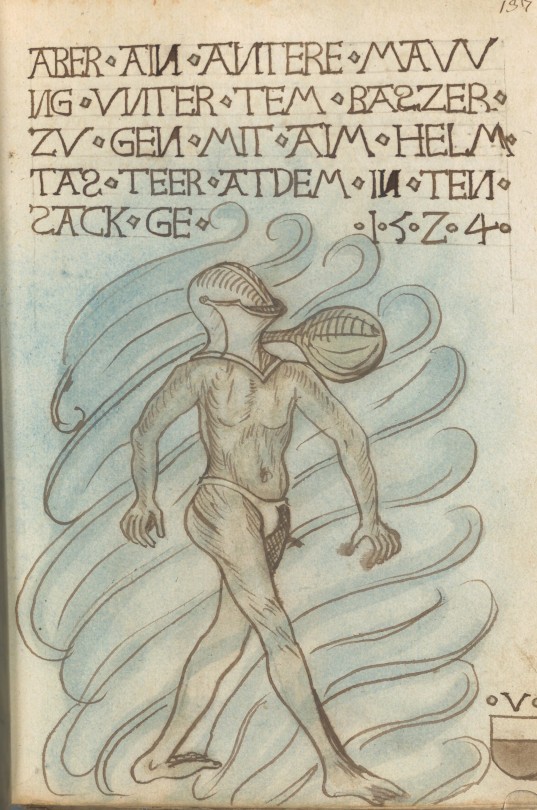
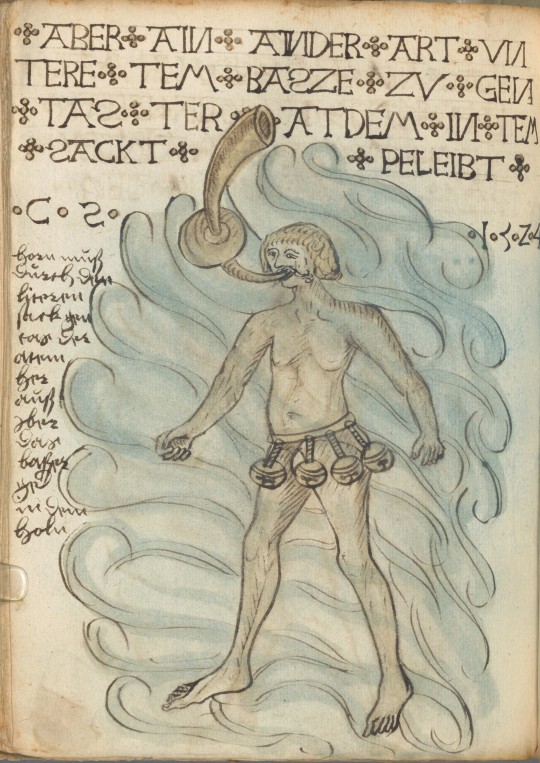
underwater diving equipment
in a manuscript containing various technical drawings, germany, 1524
source: Munich, BSB, Cgm 973, fol. 135v, 136v and 137r
2K notes
·
View notes
Text
For the yet-to-be-informed, let me preach to you the gospel of Das gayszlen

What is Das Gayszlen?
Das gayszlen, generally translated as the "whip" is a technique in historical longsword fighting from 15th century German tradition. The basic mechanics of the gayszlen are as such: a single handed strike with the nondominant or lower hand, where the sword is released from a traditional grip to allow the blade to sweep towards the leg of your opponent. Some also define other one handed strikes, slices, or thrusts as a gayszlen, but (in my experience) the more common interpretation is the narrower definition I provided. There is some difficulty however in knowing definitively how it was used historically, beyond the general difficulty in knowing anything for certain in HEMA that comes with the territory of reviving a dead art. Much proverbial ink has been spilled online about how, when, and if it is appropriate to use, and many consider it to be a cheap trick, not to be used in serious competition or incorporated into a revival of historical fencing systems. I have Thoughts™ about it and my new URL change inspired me to detail those thoughts, continued below.
Where does it come from?
Ok. so. maybe "15th century german tradition" is a bit generous. There is a grand total of ONE source for the gayszlen, which is in a fechtbuch (fencing book) by fencing master and author Hans Talhoffer, one of the most influential and prolific of his time. His numerous manuals cover a wide range of weapons and techniques including grappling, dagger, polearms, mounted and armoured combat, as well as some more silly things like duelling/long shields and "man vs woman" duels (last two pictured below).

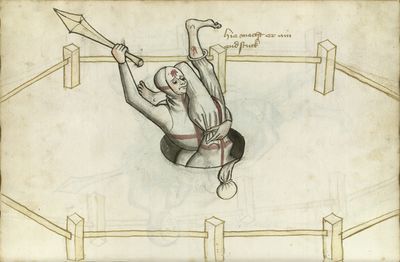
Despite all that and multiple depictions of many of the techniques for these silly "niche" styles of combat (at least in the context of modern HEMA practice, they likely were somewhat prevalent at the time and used to resolve legal disputes) there is only one illustration of the gayszlen, in one of Talhoffer's books. It depicts an exchange between a fencer in a "free point" (afaik the only time that term is used as well, though it is a position that is quite common in german longsword fencing, being a sort of hanging guard or the midpoint of a strike like a zwerchhau) and another performing the gayszlen against the aforementioned fencer, shown below (figure on the right is performing the gayszlen).

You may notice the text on the image, next to each figure! These say Ain fryes ortt and Das gayszlen, again translated as "a free point" and "the gayszlen". You may ask "but what does the actual caption or description say about it?!" I'm so sorry to disappoint you, and I share in your misery: this is all there is. Truly sad, I know. This lack of source material is (in my opinion) why there is so much difficulty defining it and so much debate over its historical usage and value in modern use.
So how do people interpret it?
As stated earlier, the (general) consensus is that it is a one handed strike (a hit, hew, or cut, as opposed to a thrust or draw/push slice) made with the offhand to the lower half of the opponent's body. One of the main disagreements on how to interpret this is whether the sword is "whipping" or cutting to the left from the right, or from the right to the left. Based on the foot position, it might look like the fencer performing the gayszlen (hereafter referred to as G) is bringing the sword from their left side to swing into the opponent's (hereafter referred to as F) left calf. However, this hand position and movement of the sword leaves G entirely open to attack anywhere on their torso or the right side of their body generally. An example of me (right) executing this interpretation is below: you can see that I do actually get the hit, but my opponent nearly hits me with the first strike to the right side of my head, where I am most vulnerable, and follows it up with another strike to my head. If this scenario played out with sharp swords and no protective gear I would lose this fight.

Another interpretation of the gayszlen is this: G holds the sword in any guard on the right side of their body (higher guards may be better for generating more force or deciding to do literally anything other than the gayszlen) and releases the sword from their right hand, holding the pommel in the left and sweeping the sword towards F's right calf. in the picture we have, it may be that the "free point" is meant to be a response to the gayszlen, and therefore F is retracting their foot to avoid the gayszlen, while striking G to their unprotected body. An example of me (left) attempting to execute this interpretation is below: even though my opponent fails to parry or suppress my attack, it wasn't necessary. I didn't have the reach to hit her leg, though her dodge may have saved her even if I had been a bit closer to begin or had extended farther.

Something that I believe supports this second interpretation is the general attitude of historical German longsword manuals to favor attacks and guards from above, to high openings, or generally closer to the upper half of the body than lower attacks and guards. A reason for this is detailed in many European sword systems, namely the destreza rapier tradition, thibault by extension, and meyer.
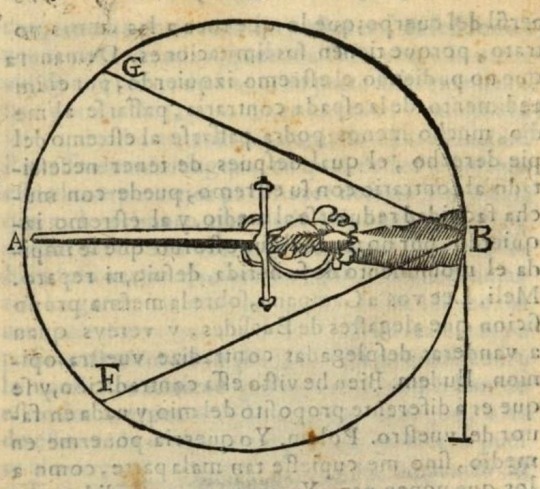
https://www.youtube.com/shorts/tPHbG28niyc
The above image and video are pretty simple explanations, the core idea being that a sword and arm extended at the height of the shoulder (or nearer the shoulder) will have more forward reach than a sword and arm extended higher or lower than the shoulder. Because of this, F theoretically has somewhat of a reach advantage over G, as their sword and arm are closer to their shoulder. though the utility (as I'll talk about more later) of the gayszlen is that it is done in a grip that extends G's reach beyond a normal grip like F has.
There are also interpretations that point to it being a thrust (like I attempt below) which is supported by similar techniques showing up in other European sword systems, which I could spend a whole equally long post talking about, but this is plenty long as is, maybe a topic for another time. The two lame reasons I have for not liking this interpretation is that a thrust doesn't seem very "whiplike", and also a thrust to the legs with one hand is harder to pull off than a cut to the legs or a one handed thrust to the torso.
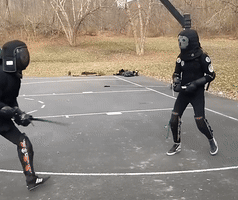
How can I incorporate the gayszlen into my modern HEMA practice?
To preface this, throughout all of this I'm mixing terms and concepts from Fiore and Liectenauer and Talhoffer and Meyer and probably some other stuff. I primarily study and practice Liechtenauer blossfechten via Ringeck, Danzig, and Lew, as well as most of Fiore's system. This is just my opinion on what purpose the gayszlen can serve in the frog DNA filled world of HEMA longsword, this is not pure to any martial art system, just an application for the sport.
That being said: I believe the gayszlen's place in modern longsword fencing is similar to that of guards like the boar's tooth, long tail, or the key, all of which can use distance deceptively. they place the sword further back than it would be in an iron gate or a plow (guards which are somewhat close to those I mentioned) and allow the fencer using them to seem less threatening than they would with more aggressive guards. Likewise, I often find myself throwing gayszlens from positions where I'm somewhat retracted or seemingly out of distance, or preparing for an attack to another opening. This can often allow an attack at an unexpected timing or from an unexpected angle. I find it works well when your opponent is static in a guard and you to a distance juuust outside of where you could hit them with a normal grip, and the switch to a one handed pommel grip gives you the couple inches you need to get the hit, and hopefully enough speed to avoid getting beaten away by their sword. One of the big dangers with the gayszlen is the opportunity it presents for getting hit. When you employ this technique, you give up basically all protection your sword has to offer, you can't block any incoming attacks, and you don't have a good enough grip to bat your opponent's sword out of the way. This means that if you don't plan well, you leave yourself totally open to a double or a hit to you if they avoid your gayszlen. See below! The fencer attempting the gayszlen (right) goes in with his head down and totally unprotected, allowing the opposing fencer to get a really beautiful hit to his head as she dodges his gayszlen. This is what you should do if you encounter someone who is eager to use the gayszlen and you wish to discourage them.

A safer position (both to avoid getting hit and to avoid injury, as I'll mention in the next section) is a more upright stance and a deep lunge, though keeping your shoulder up, as I mentioned earlier, reduces your range to that lower point.
Why don't some people allow it in tournaments?
Many tournaments, in my area and others, don't allow gayszlens. some ways this manifests are bans on all one-handed cuts, all one handed strikes altogether, including thrusts, hits to the leg below the knee, etc. Some people just don't like the gayszlen, think it's too hard to judge, think it doesn't have enough historical basis, or think it is dangerous to the person doing it or the person having it done to them. A lot of those reasons are laid out in this article, which, while I disagree with most of the points, makes those points pretty well. It's also the first result when you search on google for gayszlen, which makes me sad :( Another argument regarding the safety that isn't mentioned in that article is that to get additional reach and evade strikes from above, some people get really low when executing a gayszlen, even exposing the back of their head or body, which can lead to some really nasty hits to the back of your head or your spine, which are vulnerable areas even when wearing gear, are are often the parts of the body that have the least protective gear. In my opinion, any ruling that is intended to ban gayszlens that we've seen is too broad. banning one-handed cuts (or strikes altogether) means that whole sections of manuscripts or traditions (such as fiore's uno mano plays) can't be performed, banning cuts to the legs or parts of the legs can give an advantage to taller fencers, discarding them automatically because they're too difficult to judge the quality of can punish those who have worked to perfect them safely, etc. At the end of the day it doesn't really make a huge difference one way or the other, and every tournament organizer is biased in the way they make their ruleset one way or the other, but I think the gayszlen is unfairly maligned. In my opinion, with proper attention to levels of force, protective equipment, and judging, the gayszlen deserves a place in modern HEMA tournaments.
ALSO IT HAS GAY IN IT TEEEHEE!!
some people pronounce it "guy-slen" and I usually say "gay-slen" and I don't speak modern or medieval german so idk how it should be pronounced but I like saying gay :) because homosexuality get it???? I
I've made the gayszlen a bit of a meme in my local scene by shouting "GAYSZLEN" whenever I do it, like an anime character. This is typically regarded with friendly annoyance, and it makes hitting this silly ass technique SO much more satisfying and makes whiffing it a lot less embarrassing :)
anyways thanks for reading my long ass post ily <3 if anyone has additional thoughts, please leave them in the comments! I'd rather not debate anything, but I'd be happy to discuss intricacies of the gayszlen's use and interpretation if you're nice about it!
113 notes
·
View notes
Text
"If you want to be happy in your fighting, be lively, do not maintain the plays for long. In addition, laugh in a pretty way! And be serious [about serious things]. Trust in the sword, Which Talhoffer teaches."
Excerpt from the Opening of Hans Talhoffer's Personal Manuscript (1459)
#HEMA#Hans Talhoffer#Talhoffer#sword#swords#fencing#blossfechten#bloßfechten#I find it very sweet that across his treatises Hans Talhoffer orders you to have fun and laugh#Paladin#knight
133 notes
·
View notes
Text






New HEMA themed designs out now!
Some lovely Lecküchner designs for our Messer Fencers, and of course Hans Talhoffer can't lack from our catalogue!
Medieval Margins is a Norway based design project by medieval-excited HEMAists, combining art from real medieval manuscripts with hand-drawn calligraphy
#medieval#knightcore#medievalcore#fencing#hema#historical european martial arts#historical fencing#talhoffer#leckuchner#lecküchner
20 notes
·
View notes
Photo
Gotta love the Judiciary Duel between a wife wielding a weight wrapped in a cloth and her husband buried up to the belt wielding a mace from Talhoffer
Always reblog the Judiciary Duel between a wife wielding a weight wrapped in a cloth and her husband buried up to the belt wielding a mace from Talhoffer

(vía Battles of the Sexes: Duels between Women and Men in 1400s *Fechtbücher* – The Public Domain Review)
Hans Talhoffer, Ms.Thott.290.2º, f. 80v, 1459
9 notes
·
View notes
Note
I'd like to propose a fictional situation, and I hope you'll weigh in if interested. Let's say a portal opens in modern times, and a single champion of any age, wearing appropriate garb and armor, and a period-accurate weapon, steps out. Assuming no firearms are present, what, in your professional opinion, would be among the most dangerous armor/weapon pairings to exit that portal and face our fictional protagonist(s)?
If we're looking for more specific situations like terrain, let's assume this happens three times: once in the forest with wide clearings but dense underbrush, once in a room with tight corners and obstacles, and once in a mine with good lighting and long but narrow corridors.
First off, I'm not a professional...!
(1) A forest with wide clearings and dense brush: a lightly armoured man-at-arms (mail or brigandine on body, maybe a plackart on the lower abdomen and plates on limbs or at least arms, also some sort of helmet, non-enclosed for good peripheral vision) carrying a late medieval longsword or possibly Swiss sabre, and full Talhoffer / Lichtenauer / dei Liberi training in how to use it.
(2) A room with tight corners and obstacles: either the aforesaid lightly armoured man-at-arms, carrying a short Messer and once again with full training in how to use it OR an unarmoured man with a smallsword and full training in how to use it for combat, not just fencing - so, basic training by Angelo and lethality polish by McBane.
(3) A mine with good lighting and long but narrow corridors: peripheral vision and "nimble" mobility are much less of an issue, so full plate armour with unnecessary equestrian bits left off, carrying a pollaxe (poleaxe) and with full training in its use from "Le Jeu de la Hache" (Axe-play) and possibly an arming sword and dagger at the belt for backup.
That's today's answer, tomorrow's or next week's might differ in some or all respects, and I'm going to be interested to see what others suggest. ;->
HTH!
54 notes
·
View notes
Text
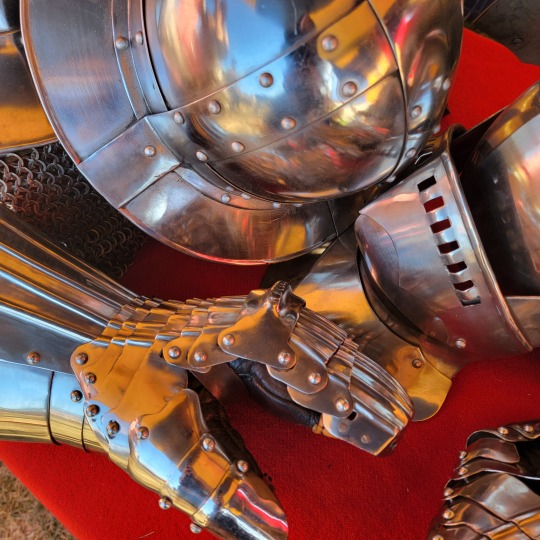
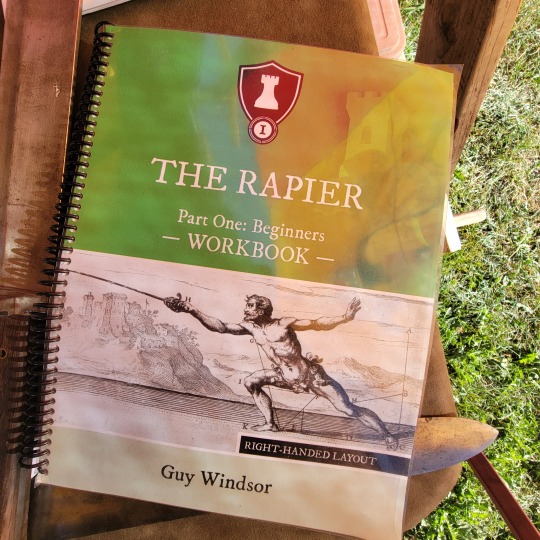

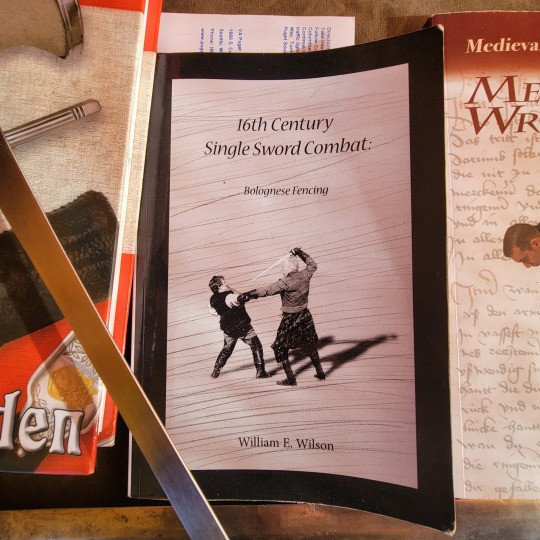

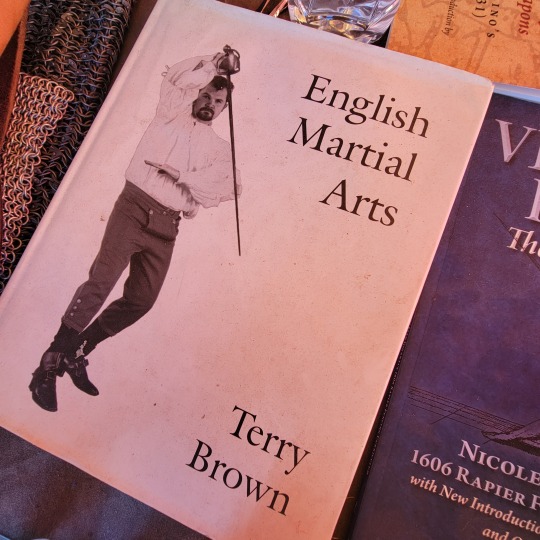
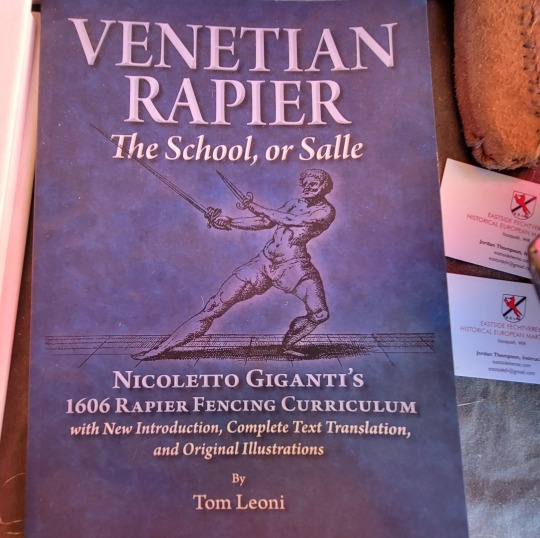
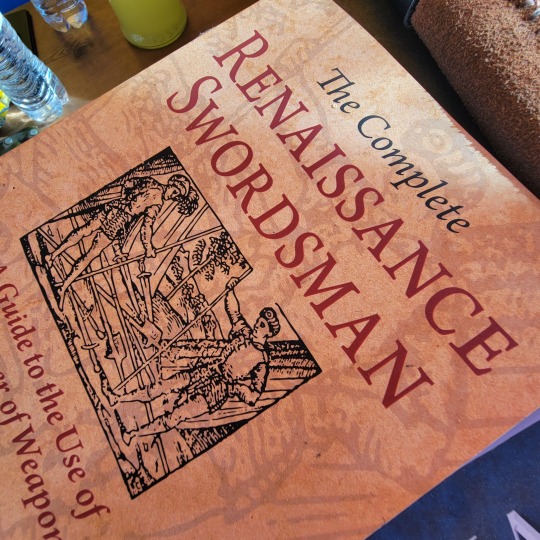
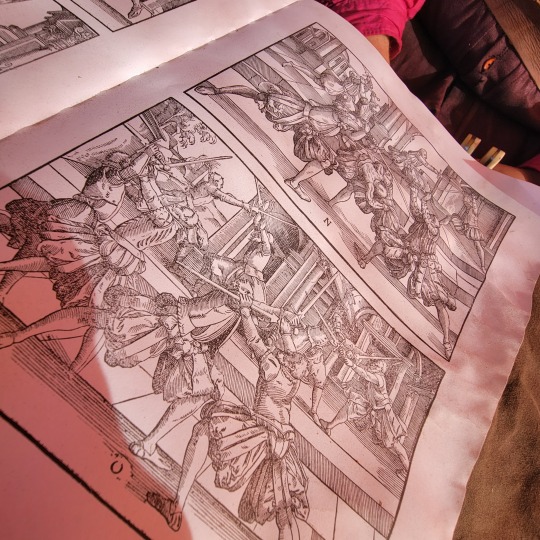
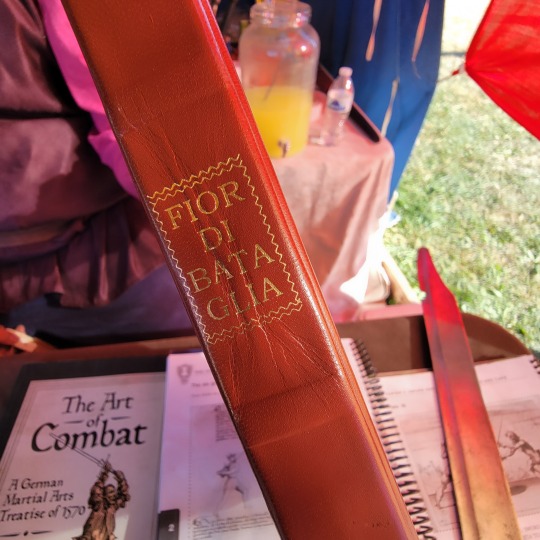


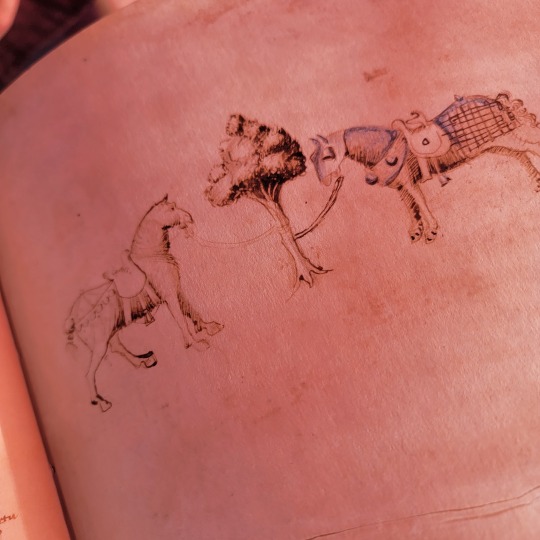
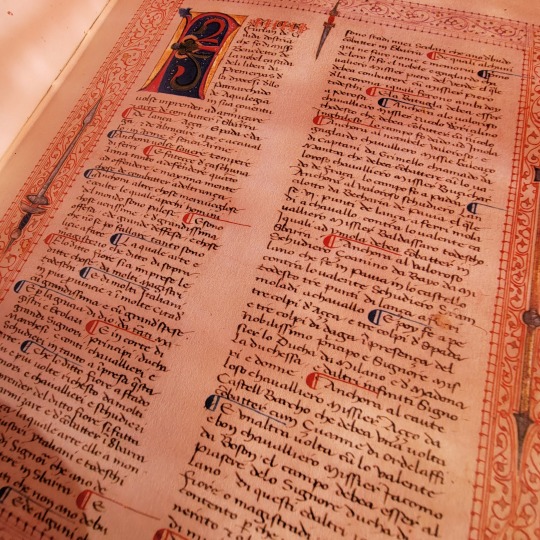
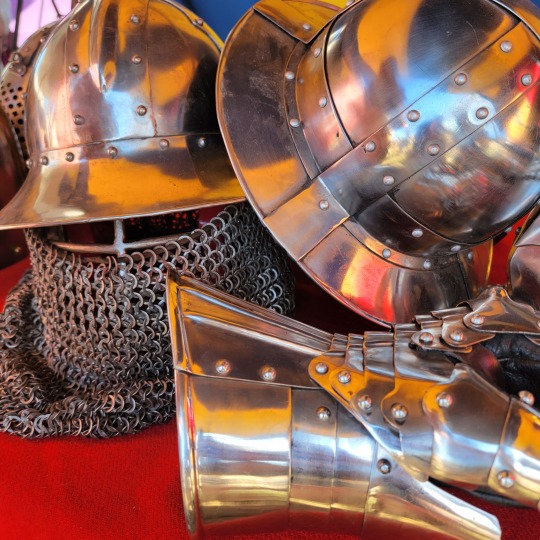
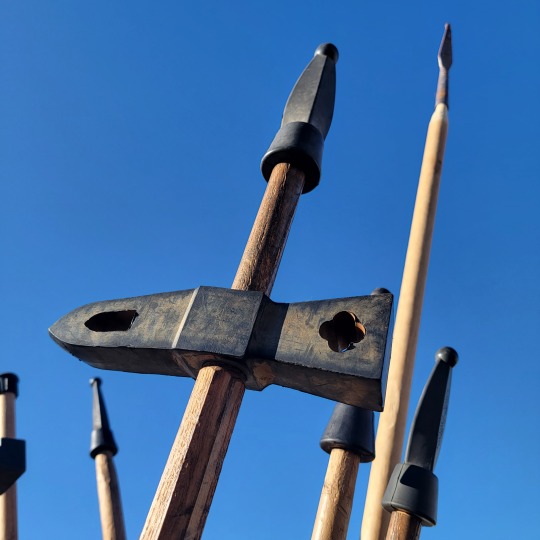
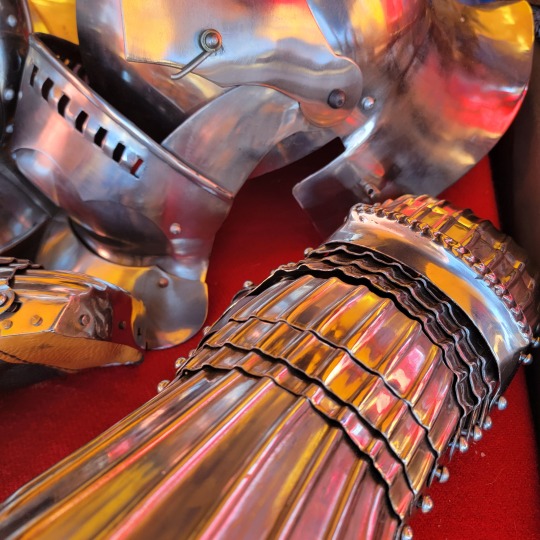
Are you interested in sword fighting or the medieval art of combat but don't know where to start? Well, let the amazing folks of the Hawkwood's Troupe help you out.
Here, we have a collection of some of the best pieces of literature when it comes to the study of the sword and much more.
A huge thank you to the troupe for letting me share these images, and to Sven Lugar for a meaningful lesson on feeling the blade.
If you know of other good recommendations please feel free to leave a comment below. :)
You can find out more about the Hawkwood's Troupe at http://www.nwarmizare.com/Newsite/
Includes:
The Rapier Part One: Beginners -Workbook- by Guy Windsor
Medieval Wrestling by Jessica Finley
16th Century Single Sword Combat: Bolognese Fencing by William E. Wilson
The Art of Combat by Joachim Meyer
English Martial Arts by Terry Brown
Venetian Rapier, The School or Salle by Nicoletto Giganti's
The Complete Renaissance Swordsman by Antonio Manciolino's Opera Nova
Medieval Combat by Hans Talhoffer
Fior Di Battaglia ("The Flower of Battle), MS Ludwig XV 13 by Fiore de'i Liberi
525 notes
·
View notes
Text
Talhoffer 1459 Man vs Women
40 notes
·
View notes
Text
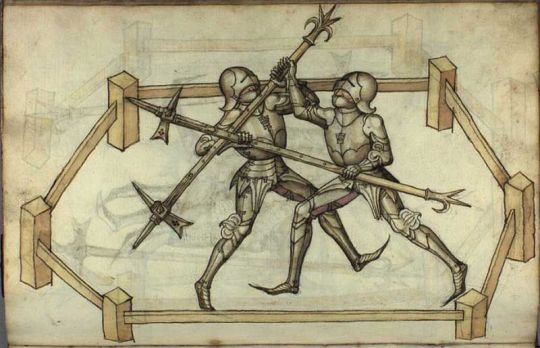
Asexual defenders practicing circa 1450.
Don't mess with us.
asexuality is word that describes an orientation, not a set of behaviors, ace people can do all kinds of sexual behaviors and still be asexual. some ace people have sex, some don't. some ace people kiss, some don't. some ace people masturbate, some don't. some ace people get homoerotically stabbed, some don't. it's as easy as that to understand.
31K notes
·
View notes